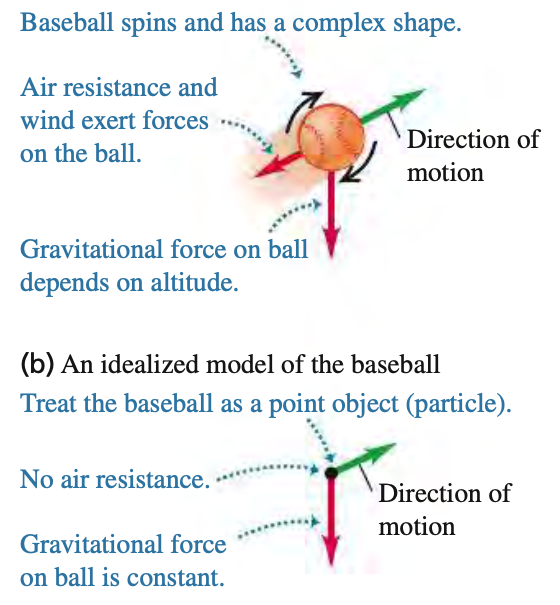If we need to analyze the motion of this object, we have consider that the ball is not a perfect sphere, it rotates around some axis as it moves, air resistance and wind influence its motion, and the weight of the ball changes with altitude. Including all of these things in the calculations make them unnecessarily complex, which is why we simplify with a model: We can ignore the shape and size of the ball, by making it a point mass, and we ignore air resistance by assuming the object is moving in a vacuum.
While we do want to ignore some aspects of the system, we must take care not to neglect too much, or the wrong thing: should we ignore the effects of Gravity too much, the model then leads us to believe the ball will travel entirely vertically. Useful models make things "as simple as possible, but no simpler".
The validity of the results gained by using some model are therefore limited by the validity of the model: Galileo's prediction about objects falling at the same speed does not include air resistance, so the model works for objects like cannonballs, but not necessarily feathers.
